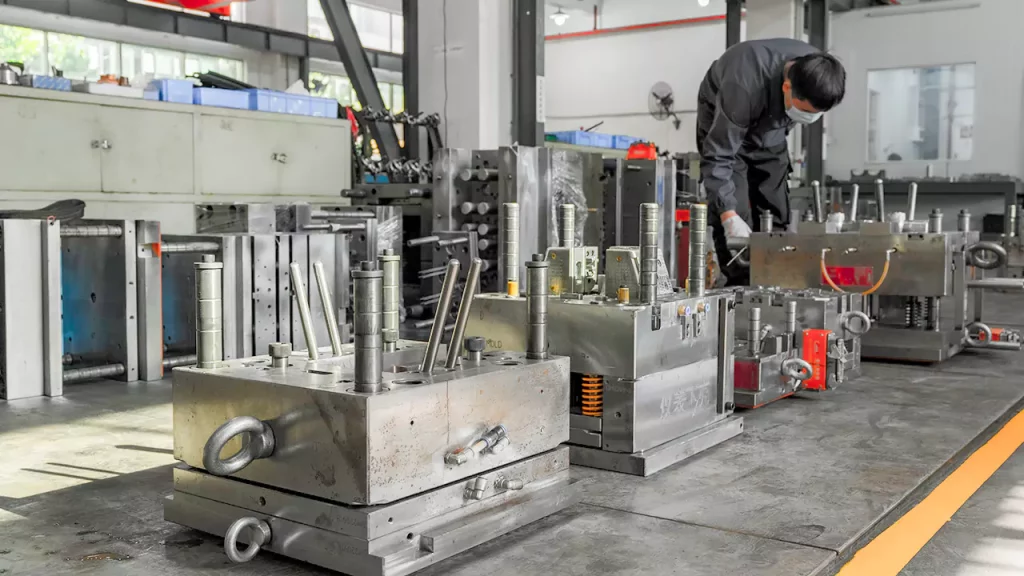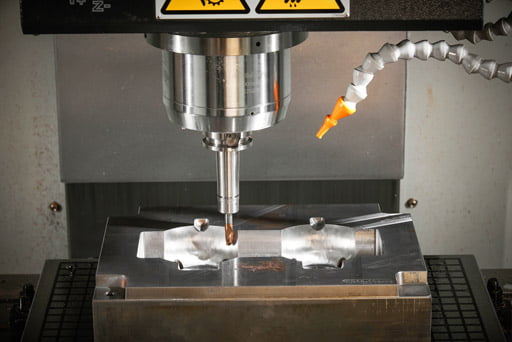Are you curious how you can better manufacture high-quality plastic injection mold? The global plastic injection molded parts market is now worth $325 billion, with a 5.7% increase expected through at least 2025.
Considering this growing adoption, it’s evident that one of the most notable advantages of plastic injection molding is the ability to produce large quantities at a low unit price compared to research costs (tooling). These same massive amounts, on the other hand, need the use of strong design practices. Even simple, incremental tool design changes that may appear insignificant in small-batch manufacturing can have a significant budgetary impact when millions of finished parts are evaluated. As a result, it makes sense to use solid design thinking from the beginning of any tooling project.
But that’s not all there is to achieving quality results in plastic injection mold design and manufacturing. Indeed, various factors can aid in improving mold quality, allowing producers to build higher-quality plastic injection molds.
This article will look in depth at such elements and how they might be implemented during the high-quality plastic injection mold manufacturing process.

First and Foremost: Precision Inspection Is Crucial During High-Quality Plastic Injection Mold Processing
Whether you’re a novice or experienced in the manufacturing sector, it’s always a good idea to create and examine a few initial trial pieces before starting the processing and production of injection molded parts. Compare the inspection results to the accuracy inspection results acquired before storing the mold or the results received during the last part’s inspection while it was in use. The inspection will allow you to determine whether or not the mold was correctly installed and adjusted. Furthermore, the initial pieces must be verified and validated before the Massenproduktion of the high-quality plastic injection mold in large quantities.
Moreover, you should also perform sampling inspection on a few different components during the mold processing and manufacturing process after a predetermined injection interval or after a predetermined number of parts have been created. This practice is known as an intermediate inspection. The goal of the intermediate inspection is to comprehend the wear speed of various components of the mold while it is in operation, as well as to analyze the influence of mold wear speed on mold precision and part quality to avoid a variety of unqualified products from being created in batches. It is done to avoid numerous unqualified items in a single batch.
After the mold’s manufacture is completed, double-checking the product’s quality is important. Furthermore, it is important to review the extent to which each component of the mold has worn down and whether or not the mold has to be repaired or reprocessed, alongside an evaluation of the mold’s exterior look.

Furthermore, you can also determine the wear speed of the die by comparing the results of the initial and final part inspections. This aspect of inspection allows for the reasonable organization of the manufacturing batch of parts for the succeeding operation, avoiding the loss resulting from the operation being interrupted due to the need for regrinding or repair during the subsequent use of the die.
The precision of each part will likely be drastically affected during the process of repairing an injection mold due to the replacement of parts as well as the disassembly, assembly, and adjustment of the mold. As a result, after the correction, there will be a second effort at accuracy testing. The primary inspection processes and prerequisites are the same as those required when new molds are stored.
Considerations for Making a High-Quality Plastic Injection Mold:
- Design of the Structure:
The structure of the mature mold not only takes into account the material properties of the product, such as Schrumpfung, forming temperature, elastic tensile deformation coefficient, and so on, but it also takes into account the speed of the cooling water as well as the opening and closing modes speed.
A sensible construction for the mold can effectively lengthen the life of the die and ensure that the manufacture of the high-quality plastic injection mold goes smoothly. Enhance productivity while cutting expenses.
- Finalizing Standard Parts:
The classic pieces do not participate directly in the process of shaping the mold; however, they do influence the operation of the mold as a whole.
A good standard item should be able to resist wear, be of sufficient hardness, have a high degree of precision, and not be easily deformed.
Do not simply compete on price because different brands offer a large range of standard parts; if you do this, it may severely affect the quality of your mold.
- Processing:
It is of utmost importance to plan out the molding process in advance. You can speed up the production cycle, reduce processing time, and evaluate significant cost-saving options with a reasonable process setup.
During the high-quality plastic injection mold manufacturing process, it is of utmost need to guarantee that the mold is processed precisely and reasonably to maintain its stability and extend its useful life. The processing error can cause the mold to burn to weld, a loss for the mold regardless of how well the welding was done. In addition, it can affect the movement of the mold, reduce the die’s life span, and cause the mold to break even while it is being used in the production process.
- Polishing:
The production of a high-quality plastic injection mold comes to a close with the polishing step performed on the produced mold itself. Despite this, polishing is the most important step because it is directly reflected in the plastic pieces.
Polishing can also be beneficial to mold action, particularly for the demolding process.
But if you skip this process, the die creation will not go as smoothly as it otherwise would. This defect is typically the result of the polish not being where it should be and the resistance being too high, both of which lead to demolding, stress markings, top-end cracks, and other issues.
- Assembling:
So die assembly is similar to assembling the machine and every part. Each screw can’t go wrong, otherwise, the repercussions will be severe; at best, it will lead to product flaws, impair production, or break the mold altogether, causing scrap to be produced.
As a result, the assembling process must be carried out with extreme care. Because of this, one should pay particular attention to the mold’s cleaning during the assembly process. In particular, the water channel and the screw holes need to be blown free of iron. If this is not done, the client is going to be extremely upset.
- Water Cooling:
Anyone who has worked with mold knows how critical it is to maintain a cool environment.
Because of the rise in both commodity prices and labor costs, manufacturers will be able to make a significant amount of additional profit if they shorten the injection cycle required for mass high-quality plastic injection mold manufacturing.
On the other hand, this will increase the temperature of the mold, which, if it is not controlled well, may result in the mold not being created at all and may even cause the mold to deform and need to be discarded.
Therefore, it is of the utmost importance to have an outstanding design for the waterways, particularly regarding the distribution density, diameter, and links between them.
- The Hot or Cold Runner:
Of all the characteristics mentioned above, this particular characteristic has the least influence on mold quality primarily because the Heißkanal is typically selected by the client, particularly for larger customers.
Because every internationally renowned foreign company performed exceptionally well in its quality and after-sales service, one can safely assume that its quality is not an issue.
However, the quality of some of the heat runners produced in China varies greatly from one another.
To compete for the benefit of the price, individual small firms will always look for methods to save money. They will employ various heating and transmission accessories that are unreliable and prone to causing difficulties.
The primary challenge with using a cold runner is figuring out how to maintain a balanced injection molding process in terms of factors such as the size of the injection mouth, the injection pressure, and so on.

- Maintenance of the Molds:
Mold maintenance mostly refers to maintenance performed during the manufacturing process.
It is analogous to a car in that it will eventually be junked if you do not use it for an extended time and do not maintain it.
Because of this, the mold needs to be completely maintained after each time it is used. One must pay particular attention to preventing rust on the main moving parts and corrosion on the forming part.
Because the mold is connected to the water throughout the high-quality plastic injection mold manufacturing process, water can drip onto the mold during the installation or disassembly. To prevent this from happening, first, ensure that the mold is dry, and then brush a layer of oil over it to protect it.
Schlussfolgerung:
Mold production should be a primary priority throughout making an injection-molded product because this is the most effective way to ensure that the product will have an efficient, durable, and long-lasting performance.
It is much simpler to make a plastic injection mold of excellent quality if one understands the factors that influence mold quality and how to avoid them during the various phases of mold creation.
This article will help you make molds of a higher quality for your customers, regardless of whether you are a beginner or an expert who has become trapped with a low-quality mold production issue.










